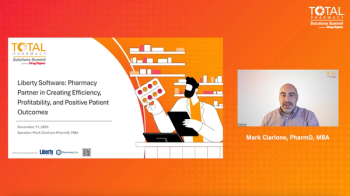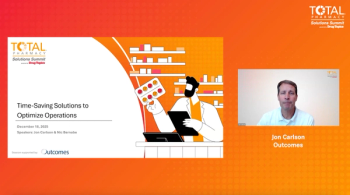
Veterinarians and Pharmacists Discuss Challenges Around Pet Medications
Veterinarians and veterinarian pharmacists weigh in on issues around working with pet medications.
A collaboration between veterinarians and veterinary pharmacists is key for the health of pets when those pets need medicine, but it’s not always a smooth process: Working with pet medications comes with its share of challenges.
Lauren Forsythe, PharmD, clinical assistant professor in the department of veterinary clinical medicine at the University of Illinois at Urbana-Champaign’s College of Veterinary Medicine, noted that identifying numbers can be an issue.
“NPI numbers are used to indicate those that are eligible to prescribe for Medicare/Medicaid patients but since animal patients aren’t eligible for Medicare/Medicaid and veterinarians are only legally allowed to prescribe for animal patients, veterinarians don’t have NPI numbers,” she said. “Veterinarians do have to have a DEA number if they are prescribing controlled drugs. However, if a veterinarian doesn’t have a need to prescribe controlled substances in practice, they may not have a DEA number due to the high cost.”
For non-controlled drugs, a state license number is the only number legally required. This can create issues with pharmacy computer systems and discount cards that are designed to work best with NPI/DEA numbers.
Another issue is when human medications are needed for animals. For instance, knowing what potential inactive ingredients might be toxic and then finding out if they are there and if the concentrations are high enough for concern.
“Xylazine is toxic to dogs, but it can be hard to tell if it’s in a product because it can be listed so many different ways,” Forsythe explained. “Benzyl alcohol can be toxic to cats, but small amounts may be okay, and it can be difficult to determine if the amount present is okay or not.”
Dosing differences are also challenging. Forsythe explained that sometimes, pharmacists dose things in animals similar to how they are dosed in humans—and sometimes the dose is completely different.
For example, levothyroxine, phenobarbital, and terbinafine doses used in dogs may seem quite large compared to standard human dosing. Dosing between species varies greatly and there isn’t a good way for pharmacists to predict what does and doesn’t extrapolate from humans or other species, so looking up veterinary doses becomes essential for dose checking.
“One of the issues is that many of these meds aren’t taught in pharmacy school and may or may not have comparable human versions,” Forsythe said. “Therefore, the pharmacist may not be familiar with their use, mechanism, and potential adverse effects.”
Julya Friedman, PharmD, president of GPS Pharmacy, a concierge pharmacy in Matthews, North Carolina, noted there are also several things that can be challenging due to different terminology and common practices.
For instance, in human medicine, QD is the abbreviation for once daily. In veterinary medicine, SID is the abbreviation for once daily.
“Electronic prescribing is a very common practice in human medicine and in some states legally required for controlled substances,” Friedman said. “However, veterinary health information systems don’t have integrations with a DEA-compliant electronic prescribing system at this point. Therefore, this isn’t something that many veterinarians know much about. The result may be a pharmacist saying something about electronic prescribing and a veterinarian assuming they are referring to printing a typed prescription from their computer system.”
Veterinarians Speak
On the veterinarian side, Jamie Whittenburg, DVM, veterinarian director at Senior Tail Waggers, and director of Kingsgate Animal Hospital, a full-service animal hospital in Lubbock, Texas, noted the biggest challenge is availability.
“The vast majority of medications we use are not veterinary specific, which I believe is not commonly understood,” she said. “In recent years, backorders have severely affected the availability of pharmaceuticals for all areas of medicine, both human and veterinary.”
Like Forsythe, Whittenburg noted that there can be misunderstandings between veterinarians and retail pharmacists on DEA license numbers.
“One issue that occurs frequently is pharmacists requesting, or refusing to fill a prescription without, a veterinarian’s DEA license number,” she said. “Some veterinarians do not possess a DEA license. Pharmacy software in some large retail chains require the number which can lead to refusal of the pharmacy to fill the requested drug if the veterinarian cannot or will not provide one.”
Lauren Witter, DVM, a veterinarian at Small Door Veterinary in Washington, D.C., noted that another challenge is ensuring accurate dosing based on the animal’s weight and condition.
“We must also be aware of potential adverse reactions or drug interactions,” Witter said. “Most important, we have to ensure compliance with the prescribed treatment regimen, that usually means finding a palatable form so that we’re not fighting our pets to give them their needed medication.”
Therefore, it’s important that vets and vet pharmacists work together.
“Their expertise helps ensure that the prescribed medication is tailored to the unique needs of the animal, considering factors like species, size, and any underlying health conditions,” Witter said. “Vet pharmacists can also compound custom medications when commercial formulations are unavailable or unsuitable for a specific patient’s needs. This collaboration enhances the safety and efficacy of pet medications.”
Newsletter
Pharmacy practice is always changing. Stay ahead of the curve with the Drug Topics newsletter and get the latest drug information, industry trends, and patient care tips.











































































































































































































